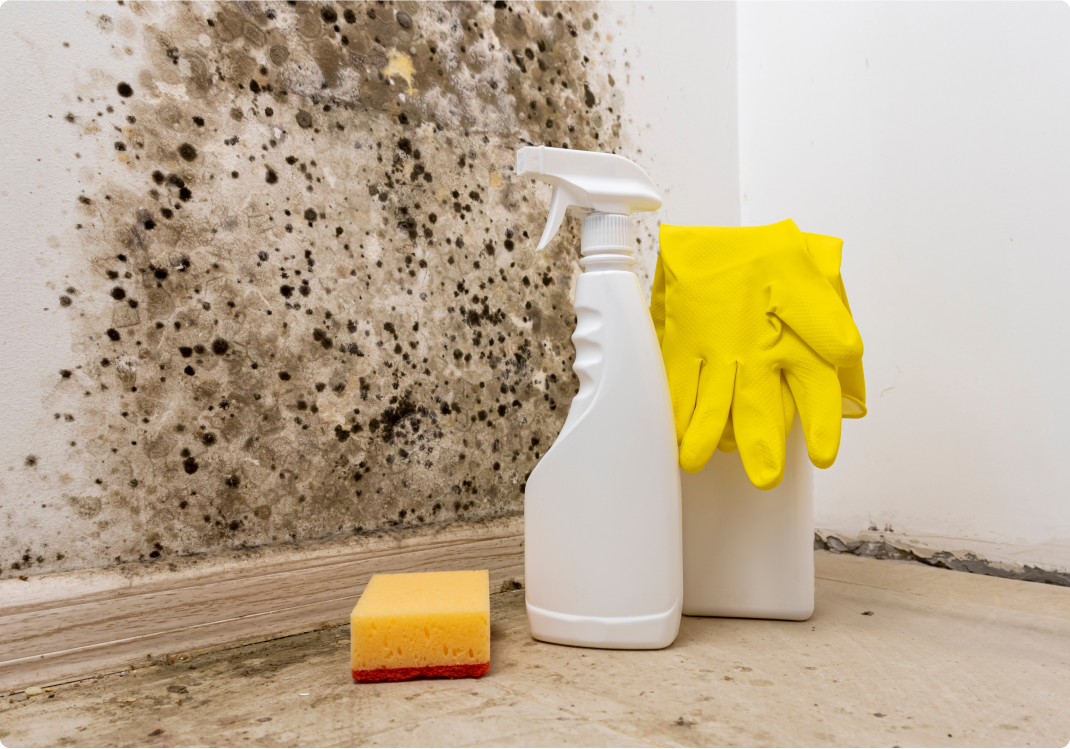Causes of Mold in the Kitchen and How to Avoid It

No one wants mold in their house, least of all in the kitchen. But it’s one of the most common residential problems throughout the US.


No one wants mold in their house, least of all in the kitchen. But it’s one of the most common residential problems throughout the US.
In fact, research shows approximately 47% of residential buildings suffer from dampness and mold, which can lead to a litany of issues—including potential health hazards that can threaten your entire family.
Unfortunately, kitchens are prone to mold and mildew growth because of the high levels of moisture and humidity that are present in them.
Mold in kitchens is frequently found in dark, moist, and poorly ventilated areas, such as:
In order to protect your family from the serious health effects of kitchen mold, you need to understand:
Kitchen mold is often the result of increased humidity from kitchen activities like cooking, washing dishes, or running appliances like a dishwasher or washing machine. Kitchens are often the location of leaking pipes and appliances, spills, and even floods. Poor ventilation in many kitchens compounds the problems caused by excess moisture and humidity.
Leaky plumbing, faulty weatherproofing, and defective roofing materials can also contribute to mold problems in the kitchen, as well as elsewhere in the house (see our guidance on how to find a bathroom leak).
Because mold is so versatile, remember that you’re not just dealing with mold in the kitchen. It’s mold under the sink, mold in the cabinets, mold behind appliances—it can form anywhere!
While you’re thinking about mold, it’s helpful to understand the differences between mold and mildew. Mildew, while not attractive, poses far less of a threat than mold and is usually easier to deal with.
Even though mold and mildew are both types of fungi, they feature subtle but important differences that can help you tell them apart:
See how a plumbing protection plan can help with covered repairs.

Mold in moist, humid areas like kitchens and bathrooms can grow quickly, seeming to develop overnight. In just a few days, a small spot of mold in the kitchen can grow into a huge problem. Stomp it out before it has a chance to grow.
A few of the most important things you can do to prevent mold in your cabinets, drawers, and everywhere else in the kitchen:
Getting rid of kitchen mold requires a systematic approach to ensure that it is thoroughly removed and doesn’t return. Here’s a step-by-step guide to help you tackle kitchen mold effectively:
1. Take safety precautions. Remember: Mold can be harmful. Turn on fans and your range hood, and open windows and doors to help circulate the air. Then be sure to wear:
2. Identify and isolate the problem areas. Figure out where the mold is present throughout the kitchen. Thoroughly inspect areas under the sink, behind appliances, inside cupboards, around window sills, and other damp spots to identify all mold growth. Use plastic sheeting or tape to isolate the affected area from the rest of the kitchen to prevent mold spores from spreading while you’re cleaning.
3. Clean and remove the mold. Start by choosing a cleaning solution. Three options:
Apply the cleaning solution to the moldy area and scrub with a brush or sponge. For tougher mold, let the solution sit for a few minutes before scrubbing.
Afterward, rinse the area with clean water and dry thoroughly. Ensure all moisture is removed to prevent mold from returning.
4. Disinfect the area. Use a disinfectant, such as bleach mixed with water (1 cup bleach to 1 gallon of water), to kill any remaining mold spores. Be cautious and ensure proper ventilation when using bleach. Allow the disinfectant to sit for at least 10 minutes before wiping it off.
5. Prevent future mold with proper fixes and updates. Three focal points:
6. Maintain the area. Regularly inspect your kitchen for signs of mold and address any issues promptly. In addition, keep your kitchen clean and dry, especially areas prone to moisture.
By following these steps, you can effectively remove kitchen mold and create a healthier environment for you and your family. Regular maintenance and vigilance are key to preventing mold from returning.
Mold isn’t the only hazard to beware as a homeowner. Unexpected system and appliance breakdowns often happen at the most inconvenient time. It’s never a good time to be without AC, your heating system, refrigerator, dishwasher or clothes washer and dryer.
Don’t get caught off guard. An American Home Shield® home warranty protects what’s most important to you so when an unexpected breakdown occurs, you have one company to contact to get the repair help you need without breaking your budget . Take a look at our plans and coverage to find the perfect warranty for your home and lifestyle.
AHS assumes no responsibility, and specifically disclaims all liability, for your use of any and all information contained herein.
Have a plan for your home when things don't go according to plan
Shop Home WarrantiesDevelopment